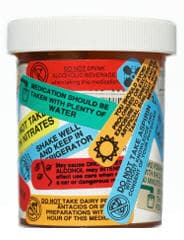Medication Safety Basics

Adverse drug events (ADEs) are a serious public health problem
Overview
The Medication Safety Program, housed in the Division of Healthcare Quality Promotion (DHQP),
leads CDC’s national adverse drug events (ADEs) surveillance activities and seeks to translate
population-based surveillance data into evidence-based policies and targeted, innovative and
collaborative interventions.
Key Facts
Adverse drug events (ADEs) are a serious public health problem. It is estimated that:
- 82% of American adults take at least one medication and 29% take five or more [1]
- 700,000 emergency department visits and 120,000 hospitalizations are due to ADEs annually [2]
- $3.5 billion is spent on extra medical costs of ADEs annually [3]
- At least 40% of costs of ambulatory (non-hospital settings) ADEs are estimated to be preventable [3]
The numbers of adverse drug events will likely grow due to:
- Development of new medications
- Discovery of new uses for older medications
- Aging American population
- Increase in the use of medications for disease prevention
- Increased coverage for prescription medications
Fact Sheets
- For Parents: Young Children and Adverse Drug Events
- Adults and Older Adult Adverse Drug Events
- Poisoning in the United States: Fact Sheet
- CDC’s Issue Brief: Unintentional Drug Poisoning in the United States[PDF - 4 pages]
- Tips to Prevent Poisonings
Features
References
- Slone Epidemiology Center at Boston University. Patterns of medication use in the United States, 2006.
- Budnitz DS, Pollock DA, Weidenbach KN, Mendelsohn AB, Schroeder TJ, Annest JL. National surveillance of emergency department visits for outpatient adverse drug events .External Web Site Icon JAMA 2006;296:1858-66.
- Institute of Medicine. Committee on Identifying and Preventing Medication Errors. Preventing Medication Errors, Washington, DC: The National Academies Press 2006.






















.png)











No hay comentarios:
Publicar un comentario